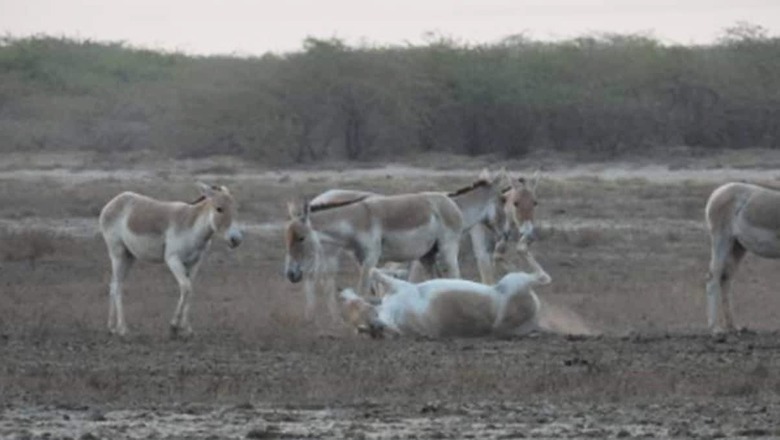
views
The population of the endangered Indian wild ass, found only in Gujarat, has risen to an estimated 7,672, which is a 26 per cent increase over a period of five years, as per the latest census conducted by the state forest department.
The 10th Wild Ass Population Survey was conducted earlier this year, an official release said, adding the number had risen to 7,672 from 6,082 counted in the previous enumeration exercise held in 2020.
“They are found in only six districts in Gujarat. Suendranagar leads with 2,705 Indian wild asses, followed by 1,993 in Kutch, 1,615 in Patan, 710 in Banaskantha, 642 in Morbi, and seven in Ahmedabad. In terms of forest regions, Dhrangadhra reported the highest population with 3,234 wild asses, followed by 2,325 in Radhanpur and 2,113 in Bhachau,” the release said.
“In these forest and sanctuary areas, there are 2,569 female wild asses, 1,114 male wild asses, 584 foals, and 2,206 unclassified wild asses. In the revenue areas, there are 558 female wild asses, 190 male wild asses, 168 foals, and 283 unclassified wild asses. The total stands at 7,672,” the release added.
Traditional methods were combined with modern technologies, including drone cameras, camera traps and the e-Gujarat Forest module, to ensure accurate population tracking, said the release.
“The Indian wild ass (Equus hemionus khur) possesses remarkable characteristics, such as its ability to survive in the extreme conditions of Gujarat’s Wild Ass Sanctuary, where temperatures often soar between 45 and 50 degrees Celsius. The primary food source for these animals is grass that grows on the islands in the desert. Known for their strength, wild asses can run at speeds of 50 to 70 kilometres per hour in the desert,” said the release.
The Indian wild ass was classified as endangered by International Union for Conservation of Nature (IUCN) in its 2008 report due to its limited population, and it is listed under Schedule I of the Wildlife Protection Act of 1972, the release said.
“Included in the IUCN’s Red List of Threatened Species, the wild ass has faced significant conservation challenges. In response, the Gujarat government has implemented several measures to protect and preserve this species, resulting in a steady increase in its population. Its population rose from 720 in 1976 to 1,989 in 1983, 2,072 in 1990, 2,839 in 1999, 4,451 in 2014, 6,082 in 2020, and 7,672 in 2024,” it added.
Other species counted during the census includes nilgai (2,734), Indian gazelle (214), blackbuck (39), wild boar (915), Indian jackal (153), and Indian desert fox (49), Indian hyena (15), Indian wild cat (4), Indian wolf (2) and rabbit (222), it added.



















Comments
0 comment